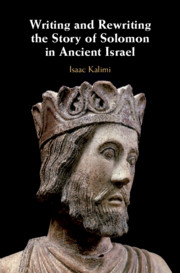Book contents
- Writing and Rewriting the Story of Solomon in Ancient Israel
- Writing and Rewriting the Story of Solomon in Ancient Israel
- Copyright page
- Dedication
- Contents
- Figures
- Abbreviations
- Preface
- Part I Introduction, Sources, and Historical Background
- Part II Solomon’s Birth, Rise, and Temple Building
- Bibliography
- Authors Index
- Name and Subject Index
- Source Index
- References
Bibliography
Published online by Cambridge University Press: 30 November 2018
- Writing and Rewriting the Story of Solomon in Ancient Israel
- Writing and Rewriting the Story of Solomon in Ancient Israel
- Copyright page
- Dedication
- Contents
- Figures
- Abbreviations
- Preface
- Part I Introduction, Sources, and Historical Background
- Part II Solomon’s Birth, Rise, and Temple Building
- Bibliography
- Authors Index
- Name and Subject Index
- Source Index
- References
- Type
- Chapter
- Information
- Writing and Rewriting the Story of Solomon in Ancient Israel , pp. 316 - 344Publisher: Cambridge University PressPrint publication year: 2018



